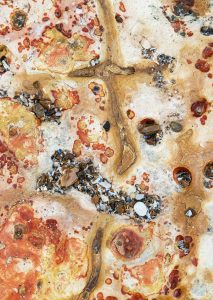Inspired by the Sea – Norfolk
 As a landscape photographer I spend most of my time exploring wild habitats looking for the next beautiful vista. But how ever much I love the wider view, life as a landscape photographer isn’t all about scenic shots. I love the idea that I can get to know a landscape really well by searching out small details which compliment the wider views and help build a picture of the areas I am exploring.
As a landscape photographer I spend most of my time exploring wild habitats looking for the next beautiful vista. But how ever much I love the wider view, life as a landscape photographer isn’t all about scenic shots. I love the idea that I can get to know a landscape really well by searching out small details which compliment the wider views and help build a picture of the areas I am exploring.
I have incorporated this idea into some of my new workshops and went to Norfolk in search for inspiration from the sea. I began my exploration at Hunstanton, famous for its multi coloured cliffs which are formed from rocks laid down 93 – 112 million years ago. The cliffs are banded in three colours rusty brown, red and white. Not only do they form an interesting backdrop but the cliffs also add to the beach with fallen boulders and pebbles, making Hunstanton one of the most colours beaches in East Anglia.
In addition to the cliffs the beach is also covered in a pavement of dome like structures which are made of the same stone as the base of the cliffs – Carstone sandstone. These mounds run in parallel lines leading out to sea and make great features for long exposure photography. The beach is also perfect for sunsets as it faces west across the Wash.
I have previously visited the beach at sunset so this time I thought I would go at sunrise which happened to coincide with low water. On paper this is not the ideal time to visit but I wanted to explore the detail uncovered at low water and focus on capturing the beauty of the geology in this Site of Special Scientific Interest (SSSI)
Sunrise was a glorious mix of stormy conditions, moody clouds and some amazing light. Sometimes pointing the camera in the opposite direction to the rising sun can really yield results.
Dodging the showers I then turned my lens to the ground and spent a happy morning exploring the beautiful and colourful geology that mainly exists above the tide line. Shooting with a macro lens I searched out patterns in the rocks and different areas of texture and colour. I had to focus stack most of my shots to ensure that all the elements were sharp but despite the challenges I came away with some interesting photographs and a greater appreciation of the beach as a whole.
 The same principle applied to my next location – Holme dunes. Marram covered dunescapes are a characteristic feature of the Norfolk coast and they are a great place to photograph. On the face of it they may seem a bit mundane – acres of marram grass, tons of sand and not much else. They are a landscape that relies on good light but there is always more to focus on than first meets the eye.
The same principle applied to my next location – Holme dunes. Marram covered dunescapes are a characteristic feature of the Norfolk coast and they are a great place to photograph. On the face of it they may seem a bit mundane – acres of marram grass, tons of sand and not much else. They are a landscape that relies on good light but there is always more to focus on than first meets the eye.
After taking some landscape shots I turned the camera to the marram grass and played around with some ICM and manual soft focus. I also found some lovely plants in amongst the grass which again gave me some interesting images to compliment my wider scenes.
Leaving the dunes I headed to the beach where sand patterns and the light reflecting from the water captured my attention.
When I was a child I used to come to Norfolk regularly (my grandparents lived here) and I spent many happy hours collecting shells, pebbles and interesting findings from the strand line. Through my wanderings I built a knowledge of my surroundings that has never left me.
To me, photography is a similar pastime. It is exploring and collecting without removing or destroying anything. Pointing the camera at smaller scenes as well as wider landscapes is a great way to build knowledge and connect with the environment. It is also a fantastic way to build a diverse and interesting portfolio of work.
If you would like to join me to get to know Norfolk my next Workshop Inspired by the Sea takes place on 11th March.